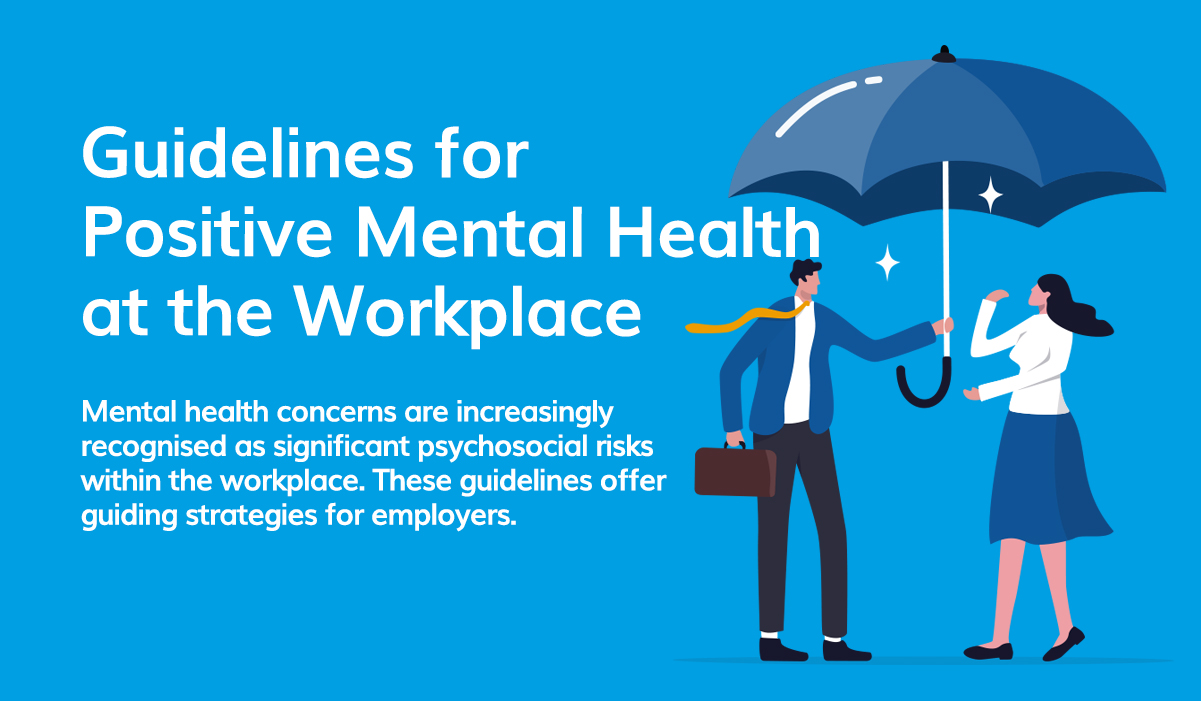Malta’s own Ministry for Health released a set of guidelines for promoting mental health in the workplace. These guidelines are intended to provide employers with practical strategies for creating a work environment that supports employees’ mental health and wellbeing. In this article, we’ll summarise some of the key points from the guidelines.
Mental health concerns are increasingly recognised as significant psychosocial risks within the workplace. Various research studies have indicated that if not adequately managed, these issues can have serious implications for performance and productivity. Unfortunately, there is often a reluctance among employers and employees to openly address stress, anxiety, and depression due to negative associations with weakness and failure.
The World Health Organisation defines it as follows: “Mental health is a state of mental well-being that enables people to cope with the stresses of life, realise their abilities, learn well and work well, and contribute to their community. It is an integral component of health and well-being that underpins our individual and collective abilities to make decisions, build relationships and shape the world we live in.”

Create a supportive work environment
Employers should strive to create a positive and supportive work environment that values employees’ contributions and promotes their wellbeing. This includes fostering a sense of community and connection among employees, as well as providing opportunities for professional development and career advancement.
Address workplace stress
Employers should take steps to identify and address sources of stress in the workplace. This may involve providing training on stress management techniques, implementing policies that reduce workload and increase flexibility, and encouraging employees to take breaks and prioritise self-care.
Encourage open communication
Employers should encourage open and honest communication between employees and management, and provide channels for employees to express concerns or seek support. This may involve creating an Employee Assistance Program (EAP) or establishing regular meetings where employees can discuss their experiences and concerns.
Provide mental health resources
Employers should provide access to mental health resources, including counselling services and educational materials on mental health and wellbeing. This can help employees better understand and manage their mental health, and feel supported and valued by their employer.
Foster a culture of acceptance and inclusion
Employers should strive to create a workplace culture that is accepting and inclusive of all employees, regardless of their background or experiences. This may involve implementing policies that promote diversity and inclusion, providing training on cultural sensitivity and unconscious bias, and actively working to address and prevent discrimination and harassment.
Overall, the guidelines emphasise the importance of creating a workplace that supports employees’ mental health and wellbeing. By taking the above-mentioned practical steps to address sources of stress and promote an environment that supports open communication and fosters a culture of acceptance and inclusion, employers can help create a positive and productive work environment for all employees.
Do you feel supported enough at your workplace? Share your thoughts about wellbeing at the workplace here.

